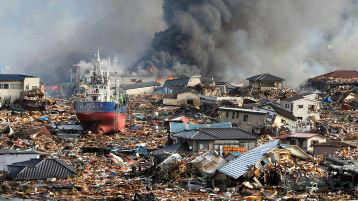Himal Southasian
Coping with disasters - Himal Southasian Magazine March 2011 special issue
Posted on 24 Mar, 2011 07:42 AM The carnage and devastation in the aftermath of a tsun
The carnage and devastation in the aftermath of a tsun
The neocolonial path to power - Article in the Himal Southasian
Posted on 13 Aug, 2010 10:15 AMThis is a translation from the Nepali of an article that first appeared in Nepal magazine on 11 July 2010. Dipak Gyawali is member of the panel of experts reviewing the Mekong River Commission’s Basin Development Plan and vice-chair of the technical committee of the UN’s World Water Assessment Programme. He was Nepal’s Minister for Water Resources during 2002-03.
Many Nepalis would be shocked to hear that Bhutan will face load- shedding from the coming winter. The citizens of Nepal have, after all, been told for decades that Bhutan has done a great job of developing hydroelectricity, that it has earned significant money by exporting electricity to India, and thus it has been able to achieve the highest per capita income in Southasia. Conversely, Nepal has been ridiculed for wallowing in ‘empty nationalism’ and stirring ‘needless’ controversies over the Mahakali Treaty of 1996 (for water sharing on the Mahakali River) as well as hydropower projects such as the West Seti, both of which involve export of electricity to India.